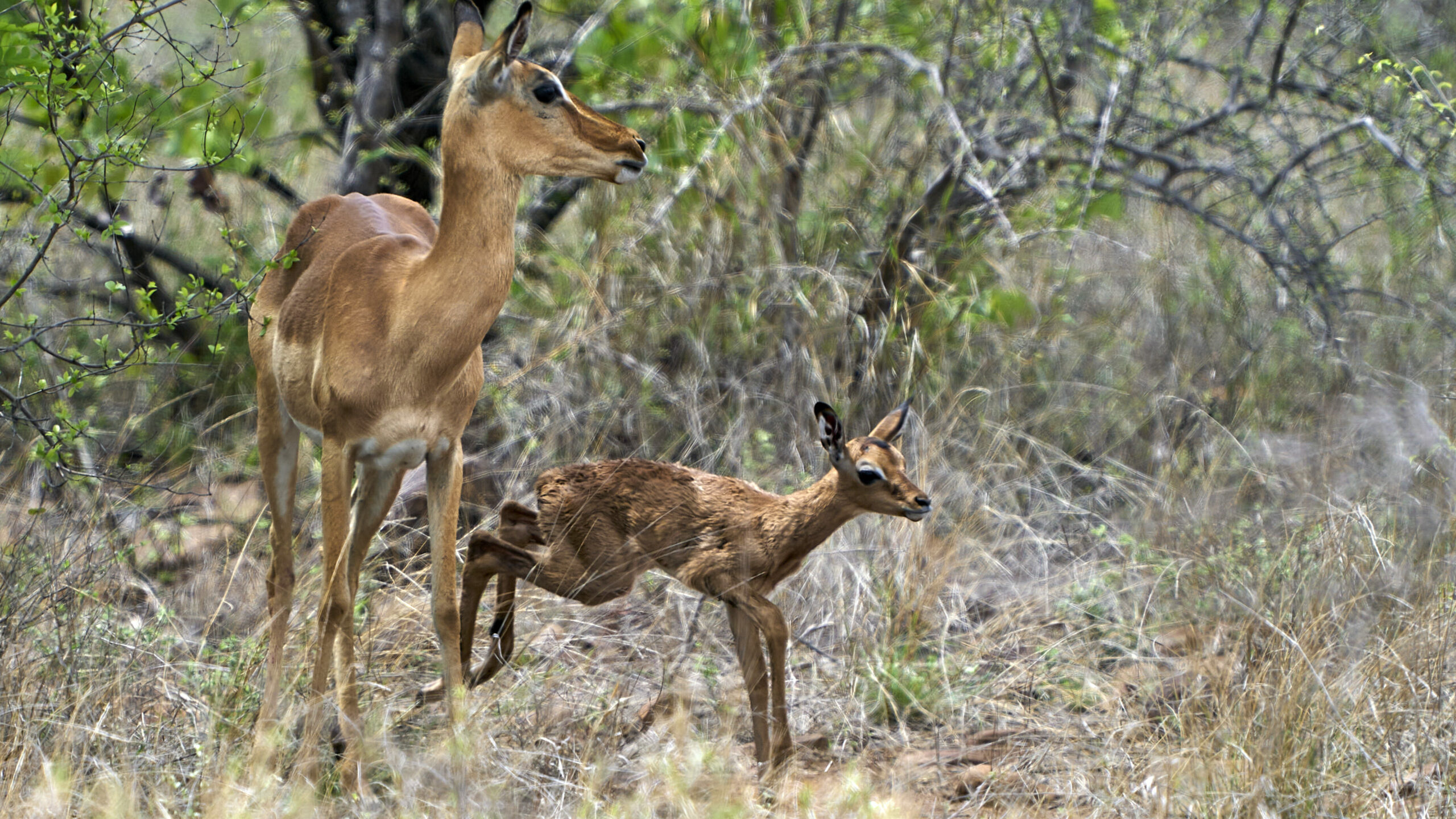It’s that time of the year again—the first rains have fallen, and new life begins to sprout. The young impala lambs are finally here!
Tony Thünemann a regular visitor to the Kruger National Park was fortunate to witness the miracle of life as an impala ewe gave birth. He shared the incredible footage with Latestsightings.com.
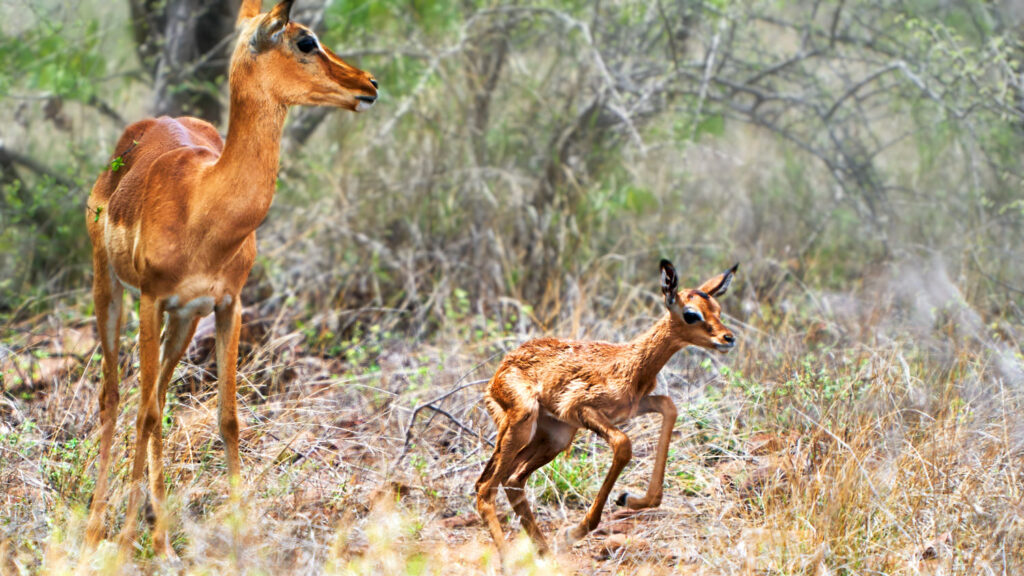
Impalas are small to medium-sized antelope found in many game reserves across southern Africa. These common but unique animals are distinguished by their well-kept brown coats and majestic horns. They may be common and insignificant to many of us however, in the circle of life, they play major roles. Impalas are nature’s landscapers and also a source of food for predators. Their abundance of numbers is thanks to their breeding and fostering habits.
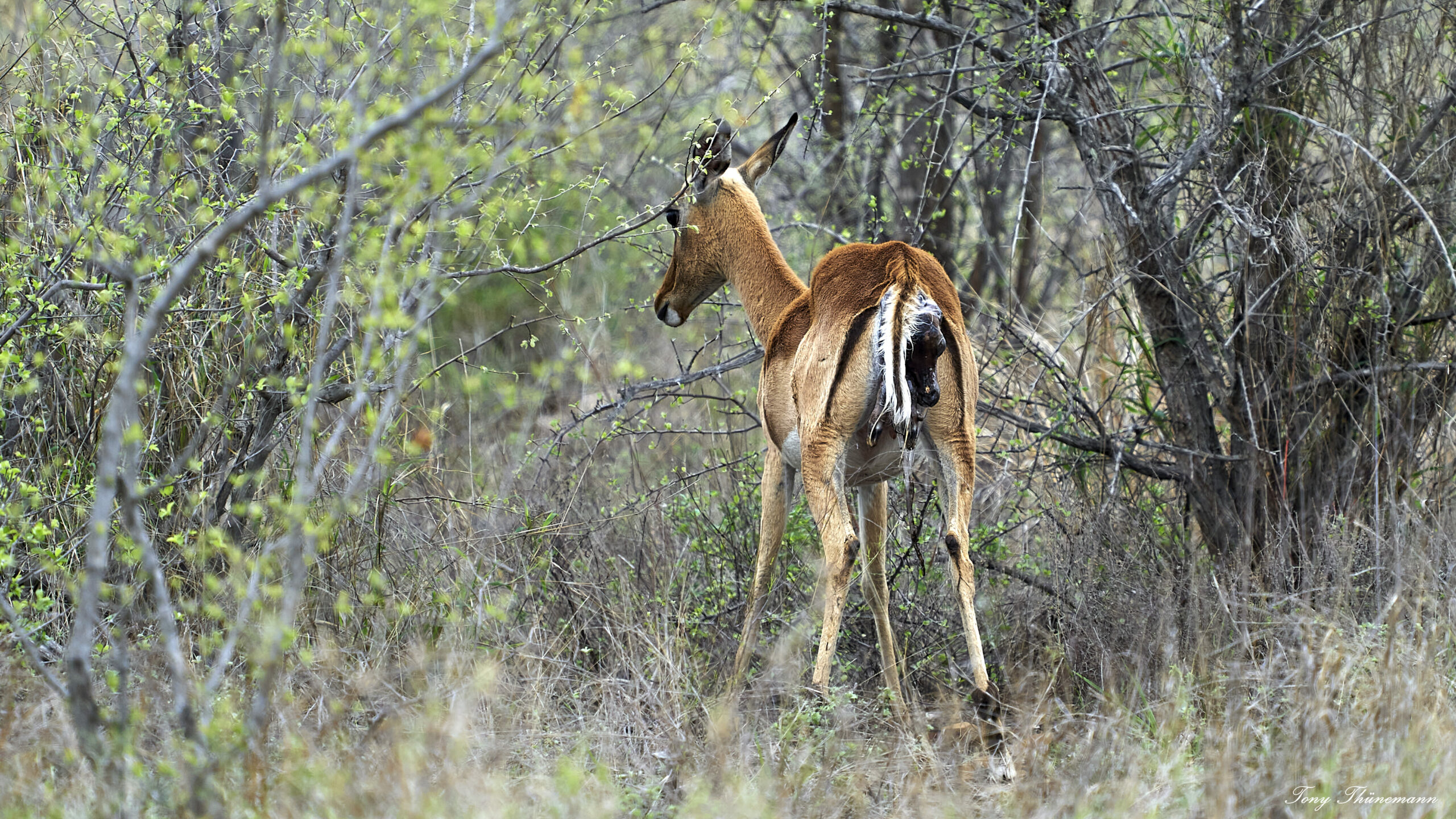
Impala ewes have a gestation period of between 180 and 210 days. Giving birth to one lamb per year and, on rare occasions, two, impala lambing season coincides with the wet season giving the little ones the best possible start to life. If the mom is well-fed, she can provide nutritious milk for the baby.
When an impala mother is finally ready to give birth, she will isolate herself from the herd. She will rejoin the herd one or two days after the baby is born. Impalas and their young are notoriously vulnerable to predators. For this reason, impala ewes synchronize their births. This means about 90% of all lambs will be born within a month, thus giving the young impalas the best possible chance of survival.
Hey mom! Look at me, I can stand!
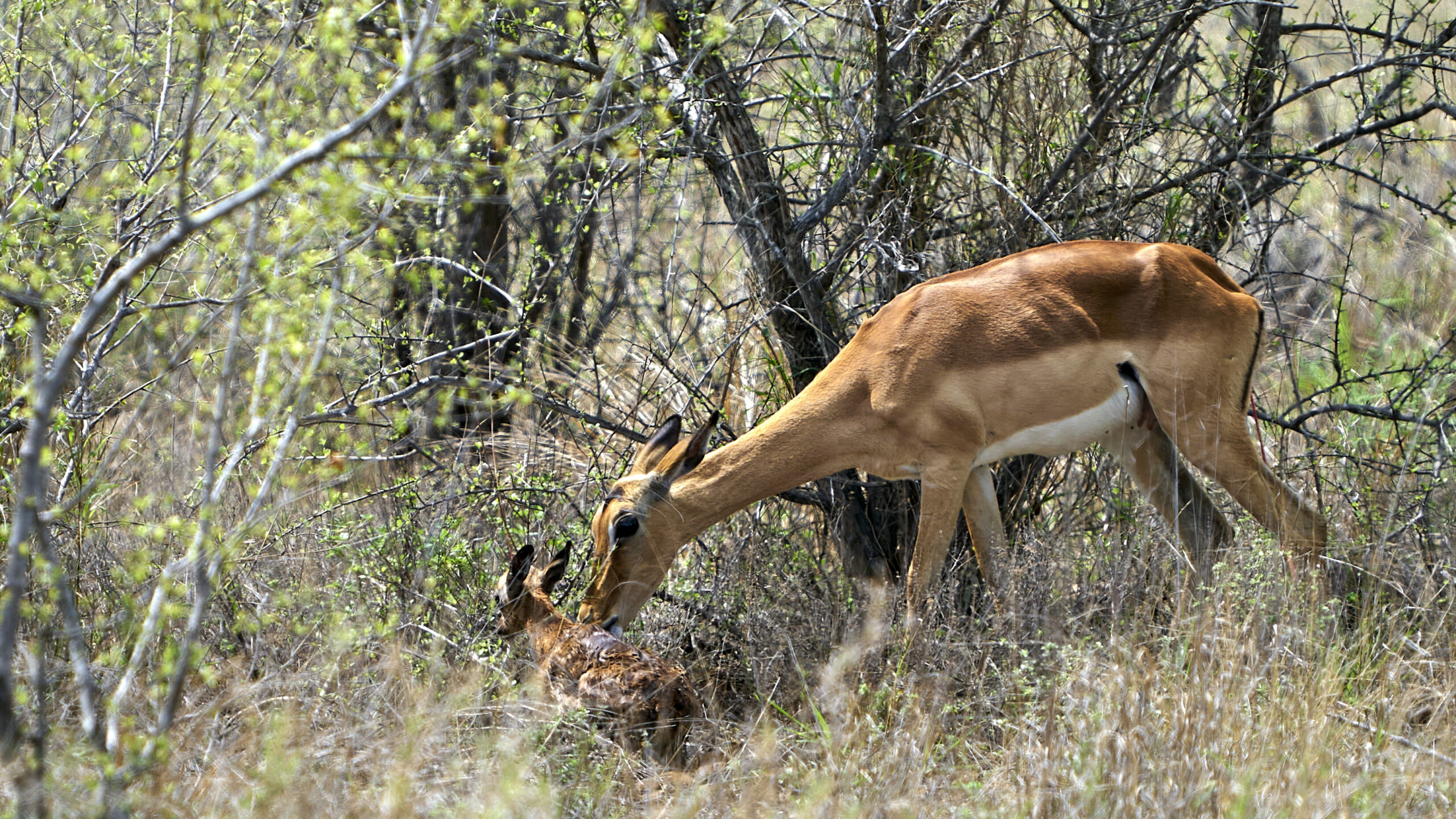
Impala lambs are precocial. This means they are born highly developed, allowing them to run away from predators shortly after birth. With a few nudges and prods from mom, the young lambs wobble around and have their first vital feed. These ewes prove over and over again why they are great mothers. Impala ewes will consume the afterbirth after the lamb is born to reduce the odour that may attract predators. Another reason they consume afterbirth is to replenish nutrients lost from their bodies during labor.
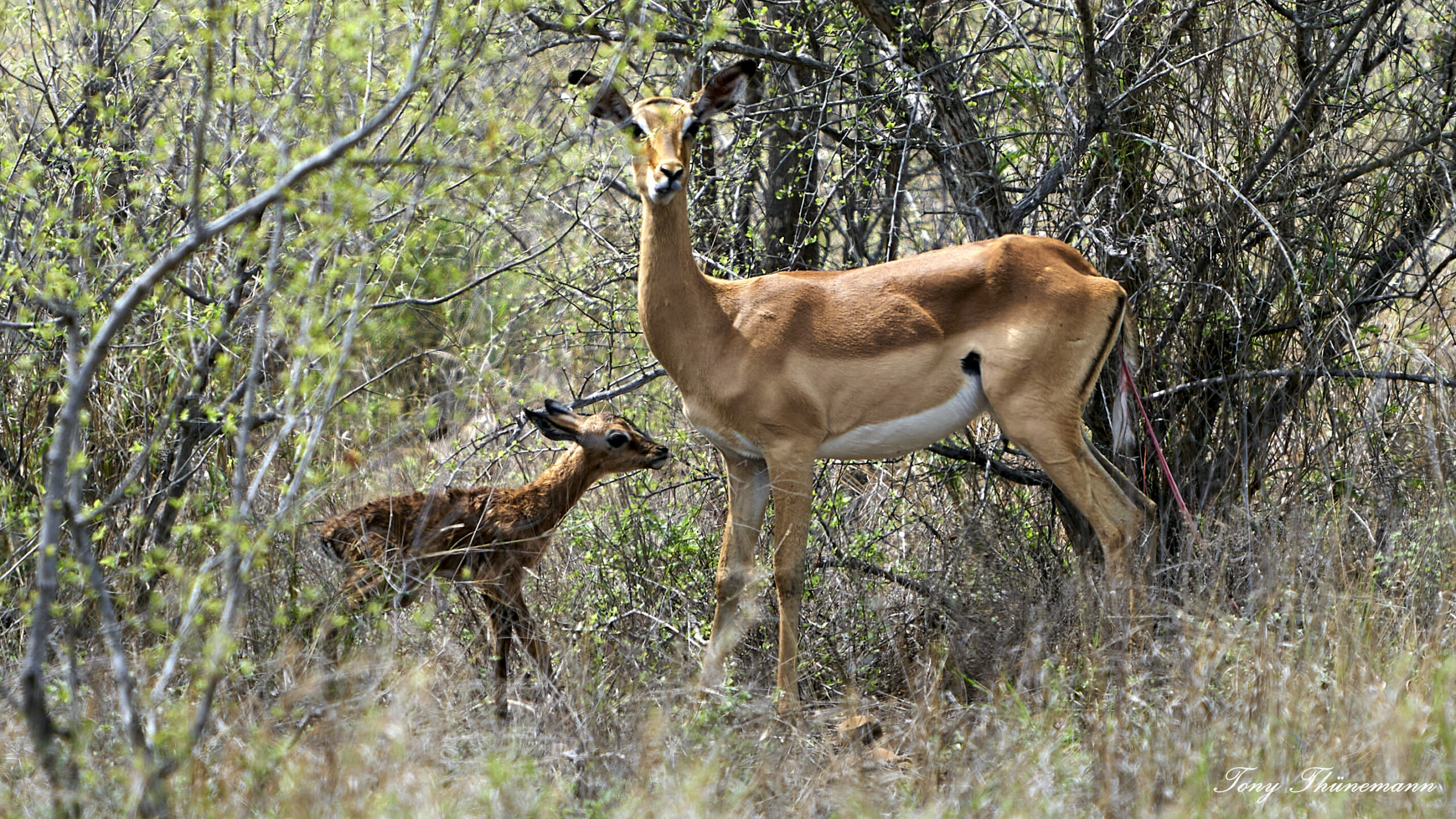
Book your next African safari by visiting the Latest Sightings accommodation page and find your ideal bush holiday.
When they return to the herd, small nursery groups are formed to ensure the safety of the little lambs. Their moms keep them hidden in the tall summer grass. The dark natural coat allows these lambs to stay well hidden and out of danger until mom returns to feed them again. The sheer number of Impalas in the Kruger National Park bears testimony to the successful breeding of these antelope.
